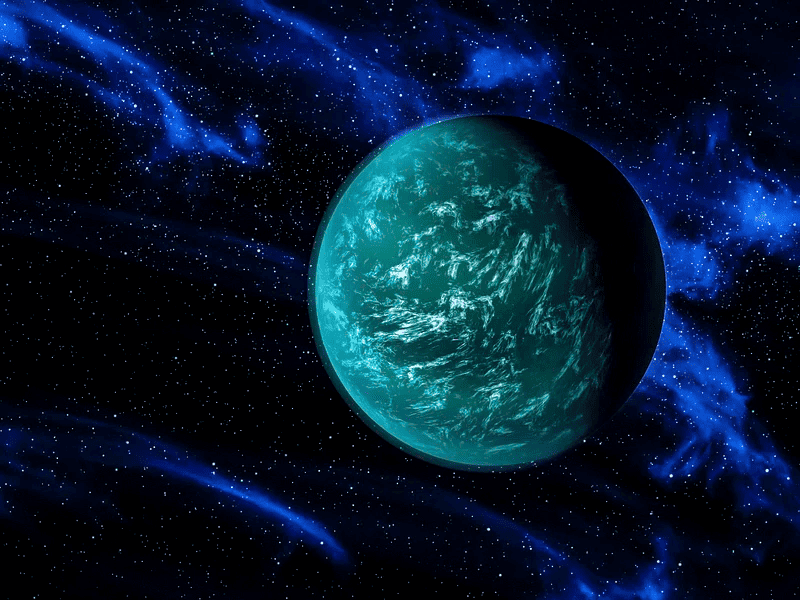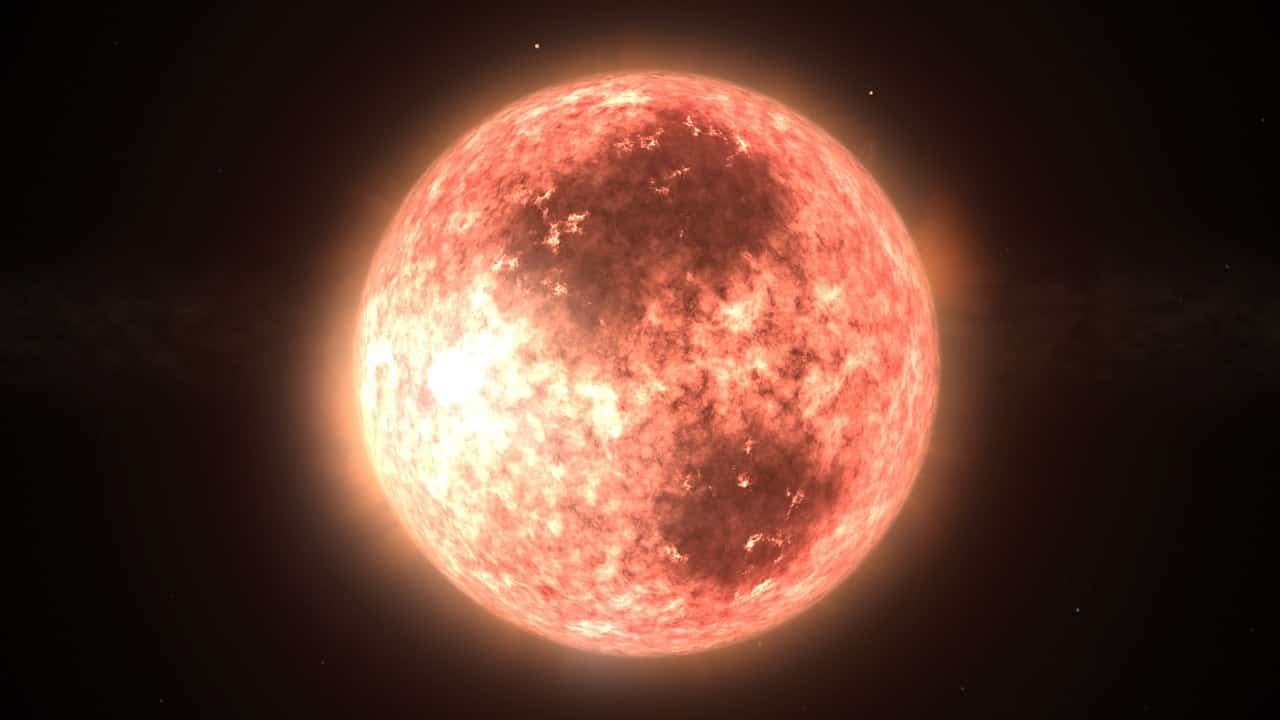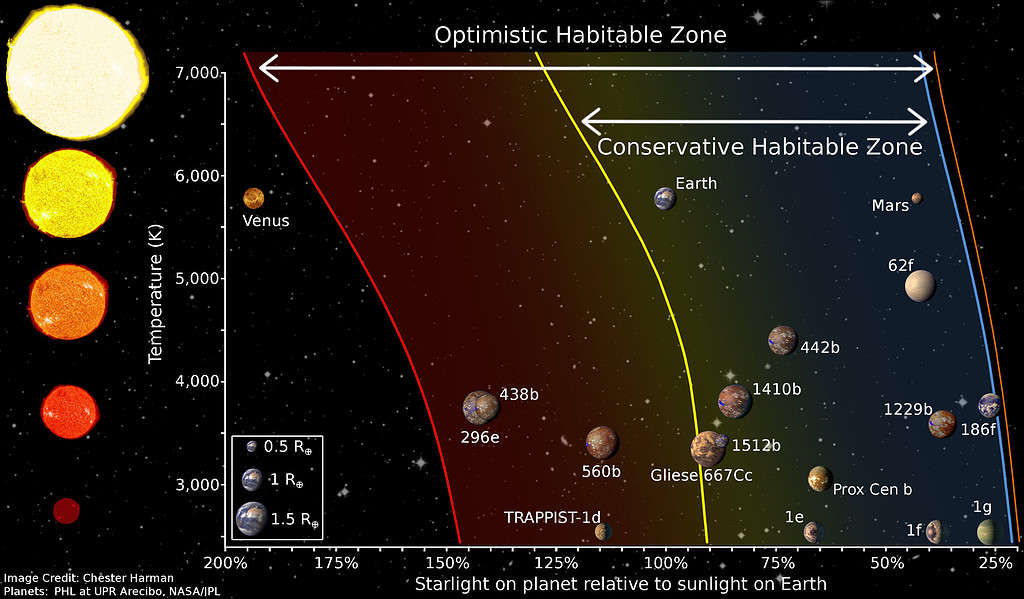
In order for a planet to be habitable, the conditions need to be just right. Too close to the star and the planet would get roasted, like Venus; too far away, and it freezes, like the moons of Saturn. But here’s the thing: not all solar systems are like our own, and not all stars are like the Sun.
If you have a bigger and hotter star, the ‘Goldlilocks’ habitable zone would be farther away. But most stars in our galaxy, at least, are not as hot as the Sun. The most common type of star is called a ‘red dwarf’. Red dwarfs are by far the most abundant type of star in the Milky Way, it’s not even close. They are about two times less massive than the Sun and far cooler.
The problem with red dwarfs is that a habitable planet would need to be very close to its star — so close that the tidal waves could be devastating. Here on Earth, the moon causes the most tidal force. The Sun has a tidal effect too, but it’s much lower than that of the moon. But for planets closer to their star, the resulting tidal effect would be massive.

So massive, in fact, that around two thirds of the planets around red dwarfs would be baked by the tidal waves — because tidal forces also generate friction, which generates heat. So if there’s too much of a tidal effect, it produces too much heat. But that still leaves one third that could be habitable.
But that still leaves one third that could be habitable.
That’s the conclusion of a new study conducted by University of Florida astronomers. They calculated these tidal effects and found that there could be far more habitable planets than we thought — because a third of the planets around red dwarfs are spared from devastating tidal effects.
“I think this result is really important for the next decade of exoplanet research, because eyes are shifting toward this population of stars,” said doctoral student Sheila Sagear. “These stars are excellent targets to look for small planets in an orbit where it’s conceivable that water might be liquid and therefore the planet might be habitable.”
Eccentric and habitable

Sagear and astronomy professor Sarah Ballard looked at the eccentricity (the measure of the “roundness” of an orbit) of a sample of more than 150 planets around these stars. The data was obtained from the Kepler telescope.
They studied how oval their orbit is, because tidal heating affects planets with oval orbits more. They then calculated how much heat these tidal effects would generate and whether this would push the planets away from the habitable range.
“The distance is really the key piece of information we were missing before that allows us to do this analysis now,” Sagear said.
“It’s only for these small stars that the zone of habitability is close enough for these tidal forces to be relevant,” Ballard said.
If the sample they chose is representative of the galaxy, it would mean that the Milky Way has hundreds of millions of promising targets for habitability. That’s hundreds of millions of stars that could host habitable planets.
As the research continues, the hunt for habitable exoplanets continues to gain momentum. The data from the Kepler telescope, combined with the calculations made by Sagear and Ballard, have opened up a whole new dimension of possibilities. Not only is the count of potentially habitable planets much larger than previously thought, but we also have a better idea of where to start looking.
However, we have to temper the excitement a bit. The fact that a planet falls within the habitable zone of a red dwarf does not automatically make it suitable for life as we know it. These planets will likely present many other challenges, not least of which is the intense radiation from their host stars. Furthermore, the close proximity to their stars could make these planets subject to strong stellar winds and flares, which could strip away any atmosphere a planet might have.
The research undertaken by the team at the University of Florida serves as a stark reminder of how little we still know about our own galaxy, let alone the universe. Yet, it also illustrates how far we’ve come in our understanding of these celestial bodies. The future of exoplanet research promises to be a fascinating journey of discovery.
Journal Reference: Sagear, Sheila, The orbital eccentricity distribution of planets orbiting M dwarfs, Proceedings of the National Academy of Sciences (2023). DOI: 10.1073/pnas.2217398120.









